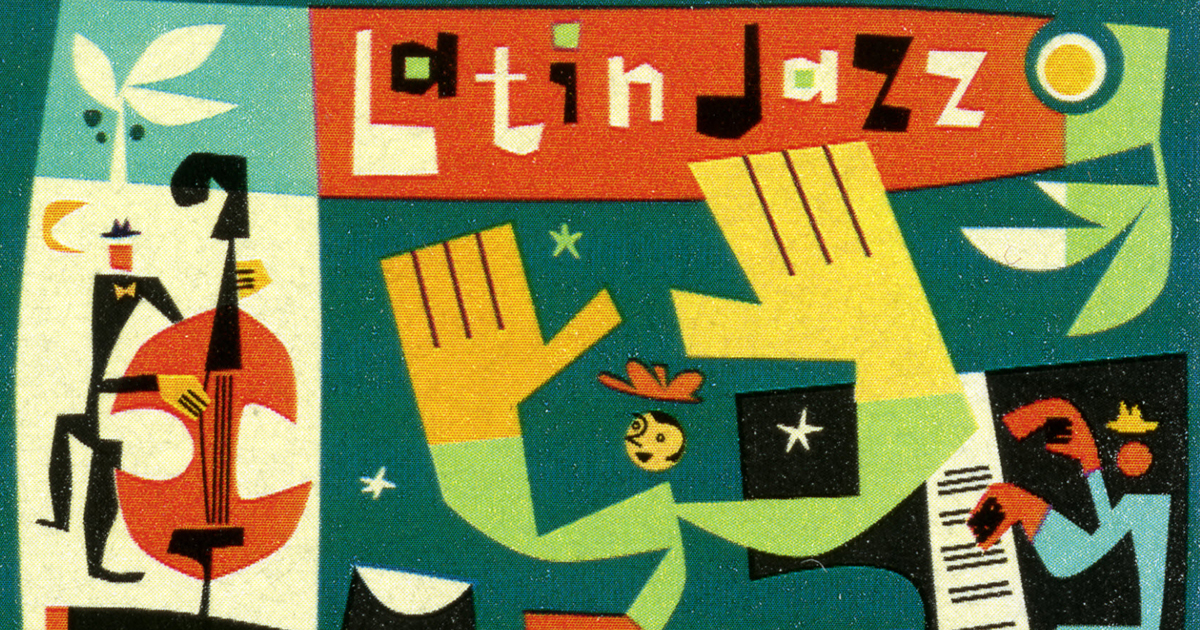
Naming Latin Jazz (Hispanic Heritage Month 2022, Part 2)
Written by Dr. Kelsey Klotz, Musicologist and lecturer in UNC Charlotte’s Department of Music, and JazzArts Charlotte instructor for the favorite virtual “Jazz Appreciation” series.
Jazz has been entwined with Latin music since its very beginning—in fact, jazz scholar Christopher Washburne argues that the birth of jazz happened synchronously with the birth of Latin jazz.
New Orleans features prominently in the origins of Latin jazz for two primary reasons: 1) New Orleans is crucial to the beginning of jazz in general; and 2) New Orleans had a unique cultural and political alchemy that allowed musical influences to cross pollinate. Geographically, New Orleans was a port city, which meant that diverse peoples (including enslaved Africans and enslavers) from around the United States and the world circulated through the city constantly. The colonial history of New Orleans also established a rich history of cultural sharing: it was first colonized by the French in 1718, relinquished to Spain in 1763, reclaimed by France in 1803, and then subsequently sold as part of the Louisiana Purchase to the United States. As a result, New Orleans had a different approach to race and racial mixing than other areas of the United States, with slave codes owing more to France and other French colonies in the Caribbean. For example, in the 1840s, enslaved Africans were able to gather on Sundays in Congo Square; this site is credited with many of the African retentions found in jazz. And whereas in the rest of the South throughout the nineteenth century the “one drop rule” reigned, in New Orleans, as in the Caribbean, there was a recognition of a different racial spectrum that included mulattos and quadroons and established a colorist racial hierarchy. That hierarchy didn’t end until Plessy v. Ferguson (1896) established the separate but equal doctrine and reiterated a “one drop” approach. Even after that court case, Creoles in New Orleans (descendants of Africans and Europeans) attempted to maintain special rights and privileges, which included greater access to musical education and musical sites around the city.
Just as Latin jazz has played an important role throughout the history of jazz from its early days in New Orleans, it also remains a crucial part of jazz’s present, as the work of Pedrito Martinez, Jane Bunnett & Maqueque, Anat Cohen, and Arturo O’Farrill demonstrates. But despite its importance to the history of jazz, naming “Latin jazz” is challenging and fraught with tensions surrounding ownership and belonging in jazz. In general, most commentators referred to what Dizzy Gillespie was doing as “Afro-Cuban”, or, less often, as “Cubop” (a play on the genre Bebop, of which Gillespie was also a key founder). “Latin jazz” first appeared in liner notes in the mid-1950s. By the early 1960s, “Latin jazz” was used by critics and record labels with more regularity, a shift that was solidified by the 1960 US embargo against Cuba (a result of the Cuban Revolution). This coincided with a surge of interest in the Brazilian bossa nova in the mid-1960s, spurred in large part by the performances and compositions of Stan Getz, João Gilberto, Astrud Gilberto, and Antônio Carlos Jobim. For many critics, bossa nova’s popularity required a re-thinking of the geographically limited name “Afro-Cuban” jazz. “Latin jazz” became, and is now, the most widely used moniker, for better or for worse.
But while the umbrella term “Latin jazz” recognizes the generalized source of some unique sounds and rhythms of a particular kind of jazz, the name also threatens to set the genre aside as a particular style jazz performers can opt to play, or not, or that jazz historians can include in their semester-long surveys of jazz history, or not. The name can encourage sidelining the music, sequestering the sounds and musicians of “Latin jazz” (aside from mainstream jazz counterparts like Dizzy Gillespie or Stan Getz) off from the main story of jazz. Perhaps pianist and bandleader Arturo O’Farrill put it best when he explained the tension between naming “Latin jazz” and honoring it: “Latin jazz is a misnomer. It doesn’t exist. It’s part of the same tree as jazz. Jazz and Latin are intertwined in ways that nobody has yet to even understand. In the music drawn from Latin roots we can find keys to both jazz’s past and its future.” As we close out our series for National Hispanic Heritage Month, it is important that we not leave “Latin jazz” within the confines of these thirty days, but continue to explore its lineage within jazz practice and history.
